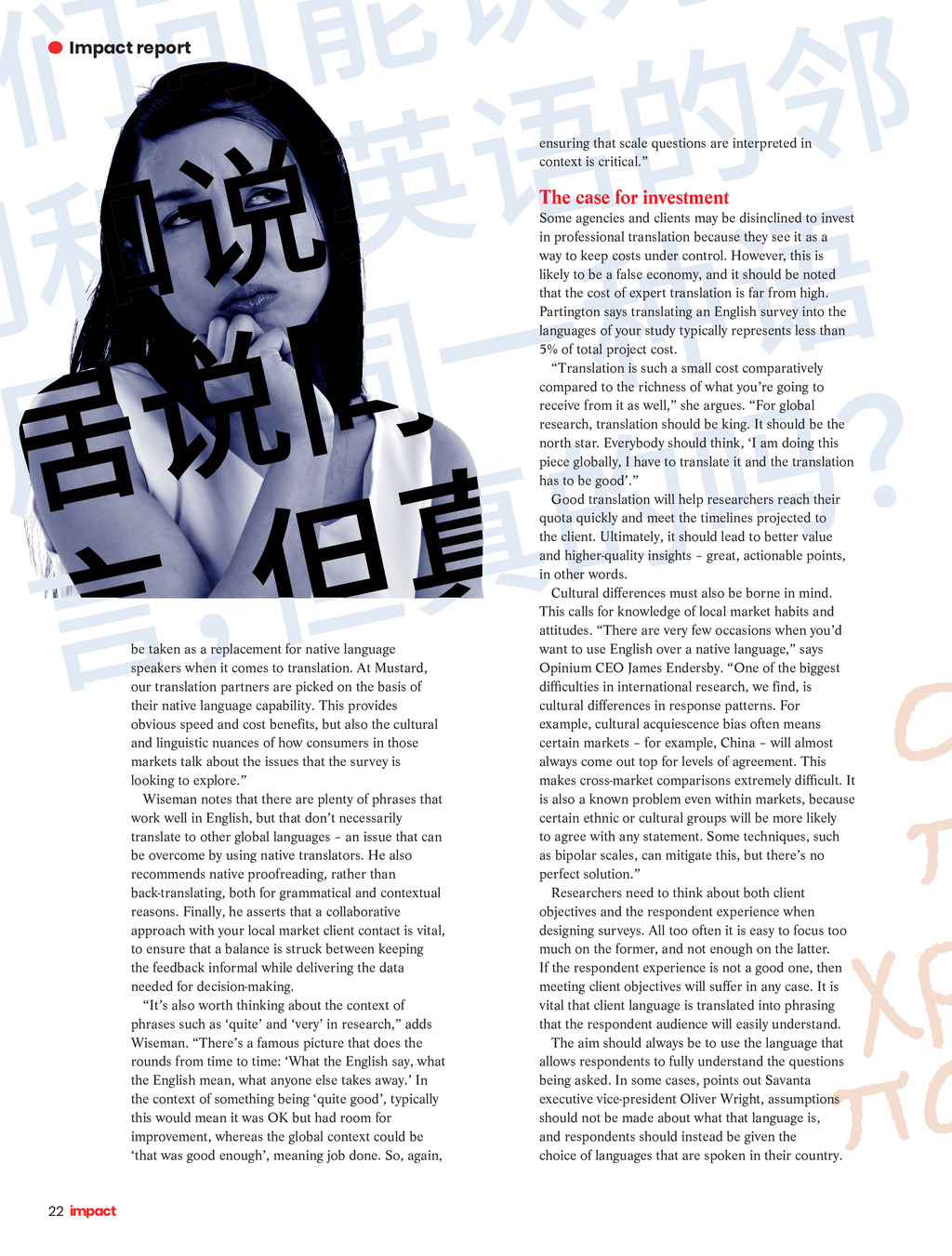




Impact report ensuring that scale questions are interpreted in context is critical. The case for investment be taken as a replacement for native language speakers when it comes to translation. At Mustard, our translation partners are picked on the basis of their native language capability. This provides obvious speed and cost benefits, but also the cultural and linguistic nuances of how consumers in those markets talk about the issues that the survey is looking to explore. Wiseman notes that there are plenty of phrases that work well in English, but that dont necessarily translate to other global languages an issue that can be overcome by using native translators. He also recommends native proofreading, rather than back-translating, both for grammatical and contextual reasons. Finally, he asserts that a collaborative approach with your local market client contact is vital, to ensure that a balance is struck between keeping the feedback informal while delivering the data needed for decision-making. Its also worth thinking about the context of phrases such as quite and very in research, adds Wiseman. Theres a famous picture that does the rounds from time to time: What the English say, what the English mean, what anyone else takes away. In the context of something being quite good, typically this would mean it was OK but had room for improvement, whereas the global context could be that was good enough, meaning job done. So, again, Some agencies and clients may be disinclined to invest in professional translation because they see it as a way to keep costs under control. However, this is likely to be a false economy, and it should be noted that the cost of expert translation is far from high. Partington says translating an English survey into the languages of your study typically represents less than 5% of total project cost. Translation is such a small cost comparatively compared to the richness of what youre going to receive from it as well, she argues. For global research, translation should be king. It should be the north star. Everybody should think, I am doing this piece globally, I have to translate it and the translation has to be good. Good translation will help researchers reach their quota quickly and meet the timelines projected to the client. Ultimately, it should lead to better value and higher-quality insights great, actionable points, in other words. Cultural differences must also be borne in mind. This calls for knowledge of local market habits and attitudes. There are very few occasions when youd want to use English over a native language, says Opinium CEO James Endersby. One of the biggest difficulties in international research, we find, is cultural differences in response patterns. For example, cultural acquiescence bias often means certain markets for example, China will almost always come out top for levels of agreement. This makes cross-market comparisons extremely difficult. It is also a known problem even within markets, because certain ethnic or cultural groups will be more likely to agree with any statement. Some techniques, such as bipolar scales, can mitigate this, but theres no perfect solution. Researchers need to think about both client objectives and the respondent experience when designing surveys. All too often it is easy to focus too much on the former, and not enough on the latter. If the respondent experience is not a good one, then meeting client objectives will suffer in any case. It is vital that client language is translated into phrasing that the respondent audience will easily understand. The aim should always be to use the language that allows respondents to fully understand the questions being asked. In some cases, points out Savanta executive vice-president Oliver Wright, assumptions should not be made about what that language is, and respondents should instead be given the choice of languages that are spoken in their country. 22 Impact ISSUE 37 2022_pp20-29_Report.indd 22 30/03/2022 12:29